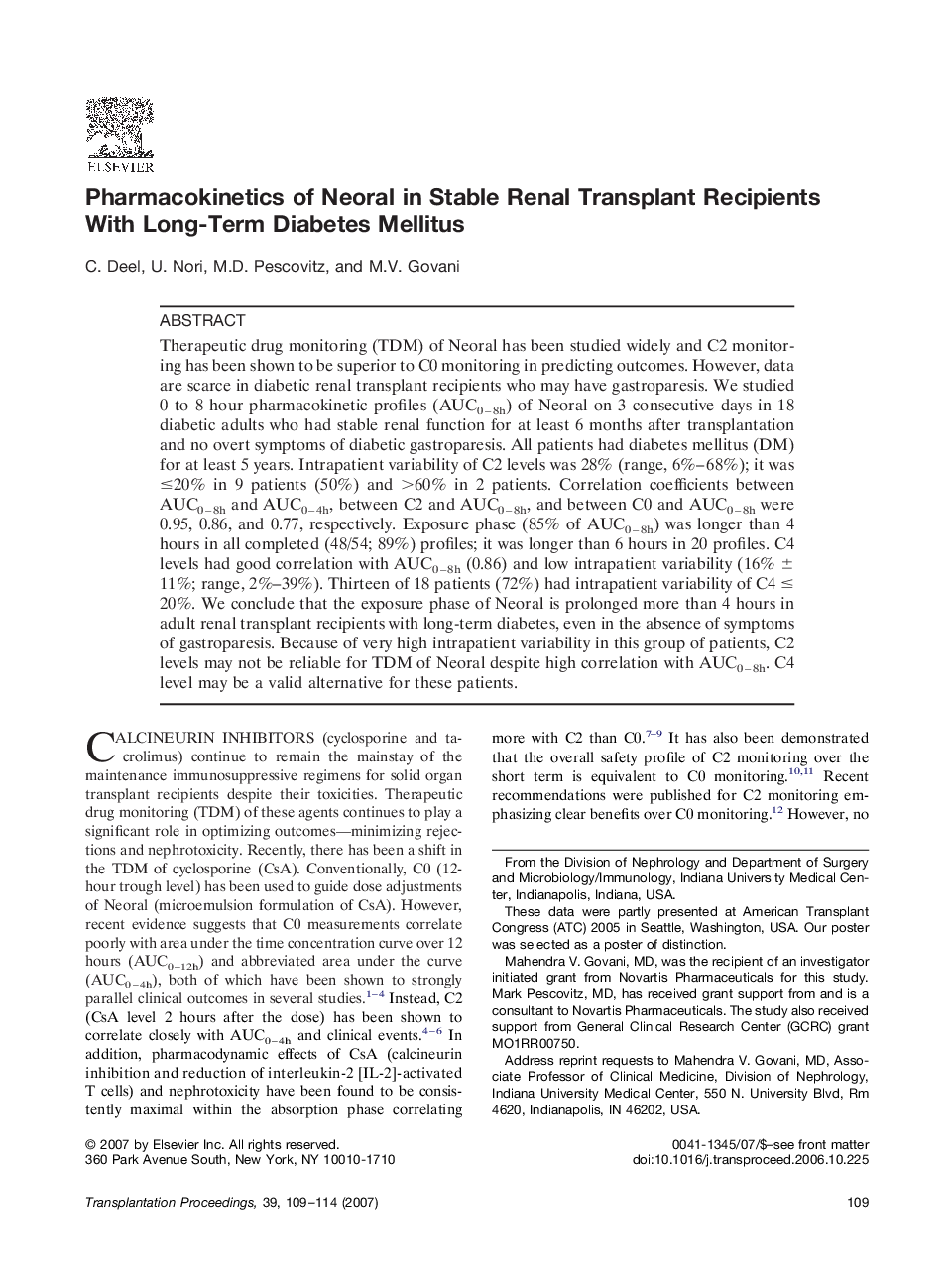| Article ID | Journal | Published Year | Pages | File Type |
|---|---|---|---|---|
| 4262922 | Transplantation Proceedings | 2007 | 6 Pages |
Therapeutic drug monitoring (TDM) of Neoral has been studied widely and C2 monitoring has been shown to be superior to C0 monitoring in predicting outcomes. However, data are scarce in diabetic renal transplant recipients who may have gastroparesis. We studied 0 to 8 hour pharmacokinetic profiles (AUC0–8h) of Neoral on 3 consecutive days in 18 diabetic adults who had stable renal function for at least 6 months after transplantation and no overt symptoms of diabetic gastroparesis. All patients had diabetes mellitus (DM) for at least 5 years. Intrapatient variability of C2 levels was 28% (range, 6%–68%); it was ≤20% in 9 patients (50%) and >60% in 2 patients. Correlation coefficients between AUC0–8h and AUC0–4h, between C2 and AUC0–8h, and between C0 and AUC0–8h were 0.95, 0.86, and 0.77, respectively. Exposure phase (85% of AUC0–8h) was longer than 4 hours in all completed (48/54; 89%) profiles; it was longer than 6 hours in 20 profiles. C4 levels had good correlation with AUC0–8h (0.86) and low intrapatient variability (16% ± 11%; range, 2%–39%). Thirteen of 18 patients (72%) had intrapatient variability of C4 ≤ 20%. We conclude that the exposure phase of Neoral is prolonged more than 4 hours in adult renal transplant recipients with long-term diabetes, even in the absence of symptoms of gastroparesis. Because of very high intrapatient variability in this group of patients, C2 levels may not be reliable for TDM of Neoral despite high correlation with AUC0–8h. C4 level may be a valid alternative for these patients.
